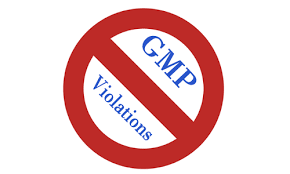Trends in GMP Violations in Pharmaceuticals

Trends in GMP Violations in Pharmaceuticals
Good Manufacturing Practice (GMP) violations remain one of the leading causes of FDA 483s, Warning Letters, and drug recalls. Recent inspection trends show recurring compliance gaps across global pharma companies:
1. Data Integrity Issues
-
Falsification, deletion, or backdating of records.
-
Lack of audit trails in computerized systems.
-
Incomplete or uncontrolled documentation.
2. Inadequate Quality Management Systems (QMS)
-
Weak deviation management and ineffective CAPA implementation.
-
Poor oversight by Quality Assurance (QA).
-
Failure to conduct effective risk assessments.
3. Deficient Documentation Practices
-
Batch records not contemporaneously completed.
-
Missing signatures or incomplete logbooks.
-
Use of unofficial worksheets or uncontrolled forms.
4. Poor Equipment & Facility Controls
-
Inadequate cleaning validation and cross-contamination controls.
-
Poor preventive maintenance of equipment.
-
Uncontrolled environmental monitoring in sterile areas.
5. Insufficient Laboratory Controls
-
Failure to investigate Out of Specification (OOS) results.
-
Selective reporting of passing results (“testing into compliance”).
-
Inadequate method validation and instrument calibration.
6. Training & Personnel Issues
-
Lack of role-specific GMP training.
-
Insufficient competency checks.
-
Employees unaware of SOP requirements.
7. Supplier & Raw Material Compliance Gaps
-
Unqualified suppliers and vendors.
-
Lack of supplier audits and material verification.
-
Use of substandard or contaminated raw materials.
✅ Takeaway: Most GMP violations stem from data integrity lapses, weak QMS, and poor documentation. Strengthening compliance culture, automation, and continuous training are key to reducing violations.
🎓 Discover one of the best Complete Pharmaceutical Quality Assurance Course available —click below to explore the course that’s shaping future in QA Course skills.

